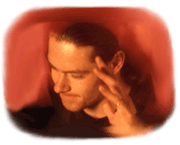Personality Disorders: An Overview
Personality disorders are chronic mental illnesses that can range from mildly unsettling to severe. They arise from a person’s home environment, as well as from genetic and chemical causes. Treatment options include psychotherapy (counseling), medicines, and self-help approaches. Some people may need the personalized attention that only hospitalization can provide.
A personality disorder must fulfill several criteria. They cannot be diagnosed just on the basis of one characteristic. People with personality disorders have an inflexible pattern of understanding people, thinking, and behaving that makes it difficult to adjust to their environment. This is serious enough to affect their functioning. But, in some cases, people with personality disorders may not think they have a problem or may not want to change. Personality disorders are usually recognizable by adolescence and continue throughout adulthood, and they become less obvious throughout middle age.
The following information is an overview of ten clinically diagnosed personality disorders and their symptoms.
Antisocial Personality Disorder
 With antisocial personality disorder, there is a pattern of disregarding or actually violating others’ rights, which usually includes most of the following:
With antisocial personality disorder, there is a pattern of disregarding or actually violating others’ rights, which usually includes most of the following:
- Failure to conform to lawful behaviors
- Deceitfulness
- Impulsiveness
- Irritability and aggression
- Disregard for safety
- Irresponsibility
- Indifference to or rationalizing having hurt, mistreated, or stolen from another
Avoidant Personality Disorder
A pattern of feelings of inadequacy, extreme sensitivity, and social inhibition, which usually involves:
- Avoidance of interpersonal contact
- Fear of being shamed or ridiculed
- Preoccupation with being criticized or rejected socially
- Acting inhibited in new interpersonal situations because of feelings of inadequacy
- Feelings of being socially inept, unappealing, and inferior
- Fear of blushing or crying in front of others
Borderline Personality Disorder
With borderline personality disorder, there is a pattern of instability and shallowness in one’s personal relationships, usually related to one’s self-image and marked by:
- Impulsiveness in areas that are potentially self-damaging
- Frantic efforts to avoid abandonment
- Recurrent suicidal talk and/or behaviors or self-mutilating behavior
- Episodes of extreme irritability or anxiety
- Feelings of emptiness
- Paranoia
Dependent Personality Disorder
A chronic need to be taken care of along with a fear of being abandoned. Symptoms include:
- “Clinging” behavior
- Difficulty making everyday decisions on one’s own
- The need for others to assume responsibility for most major areas of life
- Difficulty initiating projects or doing things on one’s own
- Excessive need to please others
- Feelings of helplessness when alone
Histrionic Personality Disorder
Excessive emotionality and attention seeking, demonstrated by:
- Discomfort at not being the center of attention
- Provocative or sexually inappropriate behavior
- Rapidly shifting and shallow emotions
- Overly theatrical and dramatic emotional expression
- Being easily influenced by others or circumstances
- The belief that relationships are more intimate than they actually are
Narcissistic Personality Disorder
A chronic need for admiration, a lack of empathy with others, and absorption with oneself, usually including:
- A grandiose sense of self-importance
- Preoccupation with fantasies of unlimited success, power, brilliance, beauty, or ideal love
- Belief that he is “special” and should only associate with other special people
- A need for excessive admiration
- Taking advantage of others
- Being unwilling to recognize or identify with the feelings and needs of others
Obsessive Compulsive Personality Disorder
With obsessive compulsive personality disorder, there is a preoccupation with orderliness, perfectionism, and control—at the expense of flexibility and efficiency—demonstrated by:
- Preoccupation with details, rules, lists, order, organization, or schedules
- Excessive devotion to work and productivity
- Exclusion of leisure activities and friendships
- Over-conscientiousness about matters of morality and ethics
- A reluctance to delegate
- Rigidity and stubbornness
Paranoid Personality Disorder
A pattern of distrust and suspicion, often demonstrated by:
- Suspicion that others are exploiting, harming, or deceiving him
- Unjustified doubts about others’ loyalty or trustworthiness
- Fear of confiding in others
- Reading hidden meanings into harmless remarks or events
- Unforgiving attitudes
- Quick, angry reactions
Schizoid Personality Disorder
A pattern of being detached from and unemotional in social relationships, demonstrated by:
- Avoidance of close relationships
- Solitary activities
- Little, if any, interest in sexual relationships
- Pleasure in few, if any, activities
- Lack of close friends or confidants other than immediate family members
- Indifference to others’ praise or criticism
Schizotypal Personality Disorder
A pattern of acute discomfort with close relationships, combined with distortions of thought and perception, and eccentric behavior, demonstrated by:
- Odd beliefs that influence behavior
- Unusual perceptual experiences, including bodily illusions
- Suspicion and paranoia
- Odd, eccentric, or peculiar behavior and attitudes
- Lack of close friends or confidants other than immediate family members
- Excessive anxiety around others
REFERENCES:
American Psychiatric Association. DSM IV TR. 4th ed.Washington,DC: American Psychiatric Association; 2000.
Fact sheet: personality disorders. Mental HealthAmericawebsite.





